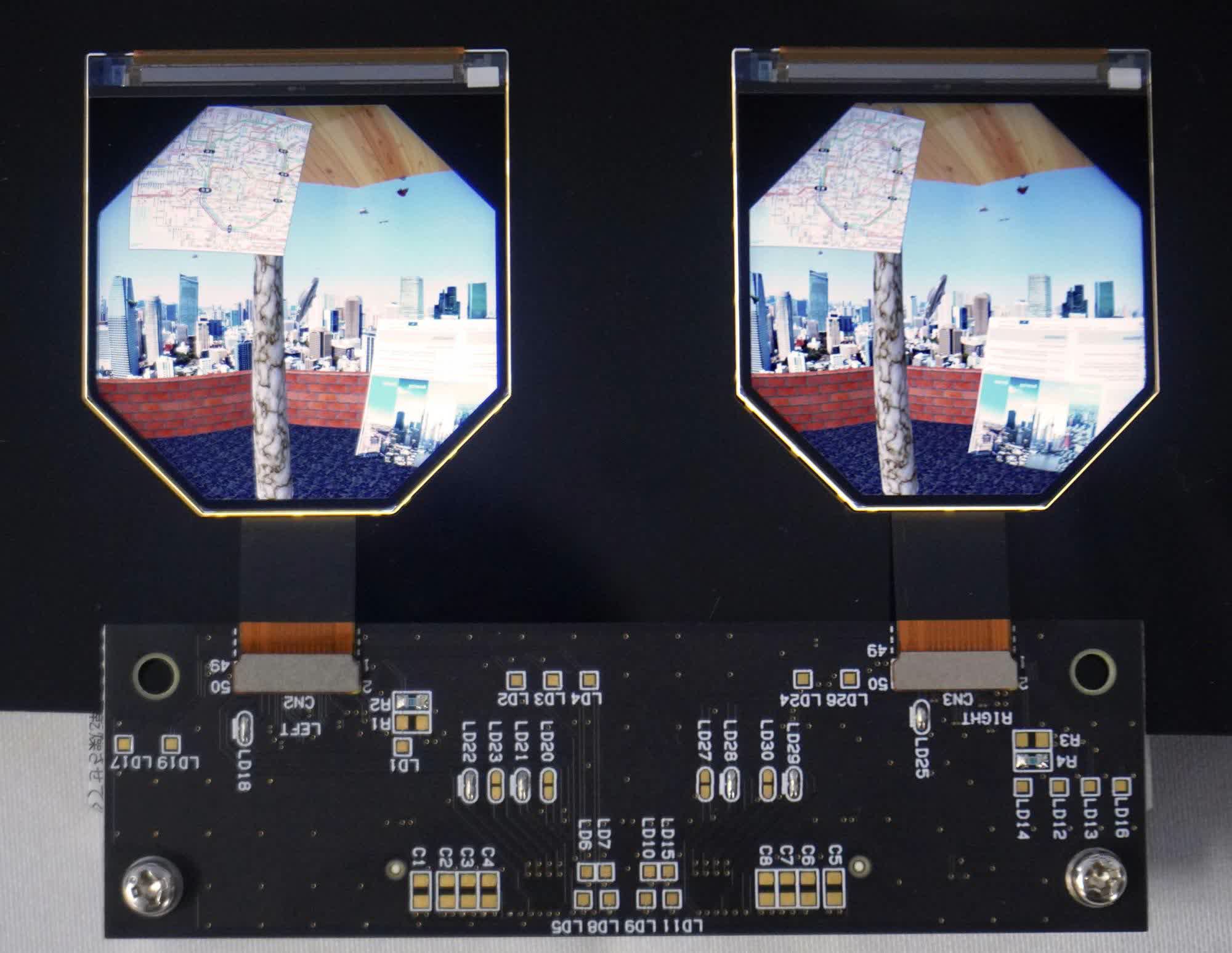Former Apple supplier Japan Display shifts focus towards VR
The large picture: Virtual reality has still to accept off in a large way, only a shift in consumer habits along with the introduction of more than affordable headsets like the Oculus Quest ii accept rejuvenated this marketplace segment to the point where Japan Brandish is betting its future on making displays for VR headsets. It's a calculated chance that could pay off in the future when the market volition be more mature and JDI will have established a strong foothold.
Japan Display (JDI) used to be one of Apple'southward main suppliers of LCDs for the iPhone, and over the years well-nigh of its business was focused on that. Back in 2022, the company sold its screen manufacturing plant to Precipitous for $390 million to repay debt to Apple and avoid further losses from the industry's growing preference for OLED screens in smartphones.
That said, the Tokyo-based LCD manufacturer believes OLED still are at a disadvantage compared to LCD engineering science when it comes to achieving a higher yield for high-resolution displays, which in turn makes the latter technology more competitive in terms of cost.

Moving frontwards, Japan Display will focus on perfecting its LCD tech for VR headsets, which are expected to get more than popular in the coming years.
According to a Bloomberg written report, the lockdowns during the pandemic have created higher demand for VR headsets, with Facebook and HTC both experiencing a surge in sales over the last 12 months. That consumer trend has persisted fifty-fifty as the restrictions eased, and VR headset manufacturers have largely shifted away from OLED on newer models like the Oculus Quest two.
JDI VR principal Takeshi Harayama told Bloomberg, "information technology's hard to find a VR headset maker who doesn't have a human relationship with united states," which is why the company feels confident about its strategy. Main VR headset engineer Yoshihiro Watanabe says JDI is capable of making displays with pixel densities of 1,200 pixels per inch, which is a lot higher that that plant on high-cease smartphones.
Must read: Virtual Reality Buying Guide: Which Headset is Right for You?
OLED makers similar Samsung and LG aren't particularly interested in the VR headset market, since information technology's a lot smaller than the smartphone market. JDI believes information technology can fill this gap, but not all VR headset manufacturers are opting for LCD screens. For instance, Sony is said to employ OLED panels in its next PlayStation VR headset, but JDI still expects revenue from not-mobile businesses, which includes VR headsets, to increase 25 pct this twelvemonth and reach 70 billion yen ($637 one thousand thousand).
Source: https://www.techspot.com/news/90084-former-apple-supplier-japan-display-shifts-focus-towards.html
Posted by: dawepith1958.blogspot.com


0 Response to "Former Apple supplier Japan Display shifts focus towards VR"
Post a Comment